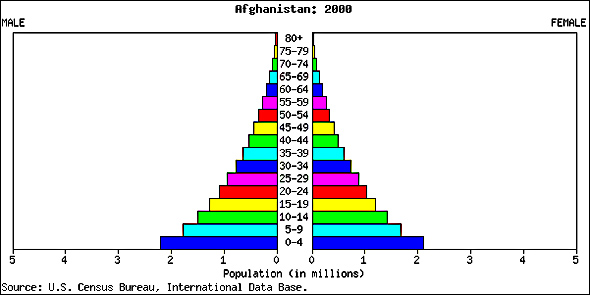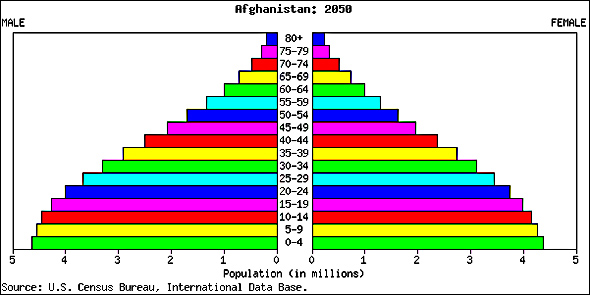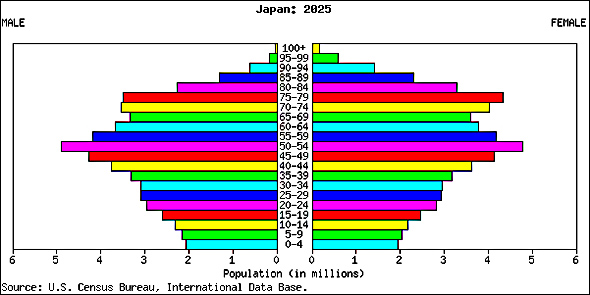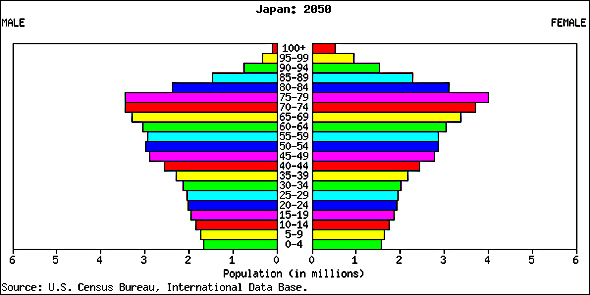The 2007 World Population Data Sheet
March 20, 2008
The Population Reference Bureau exists to educate “people around the world about population, health, and the environment,” with the purpose of enhancing the well-being of today’s and future generations.
The organization’s “2007 World Population Data Sheet” contains a wealth of information on, for example, countries’ population sizes and life expectancies. One of the most important points made in the paper is that “recent data from many countries have shown that women with at least a secondary-level education eventually give birth to one-third to one-half as many children as women with no formal education.”
Though the organization covers issues related to fertility rates, it presents a great deal of data on other matters pertaining to the welfare of people across the world.
Population Pyramids
March 20, 2008
The US Census Bureau provides a handy tool for viewing nations’ population pyramids. Graphs indicate the number of males and the number of females according to age. A pyramid roughly in the form of a triangle with a wide base indicates a large percentage of youths to support the elderly. It also indicates a growing population.
Many poor countries have pyramids in this shape. Unfortunately, poor nations can least afford dramatic increases in population. Afghanistan is a prime example, as shown in the following graph for the year 2000.
Note that the country’s projected pyramids for 2025 and 2050 indicate that growth will likely continue for decades. The CIA’s estimated 2007 fertility rate for Afghanistan is 6.64 children born per woman.
Many developed nations, on the other hand, face hardships because a drastically reduced percentage of youths will have to support a large percentage of elderly. In extreme cases, a feedback situation may develop in which the expense of caring for the elderly leaves insufficient money to afford children. If this happens, the nation may fall into an extended aging and population collapse until a severe crisis occurs. Such a trend is indicated by an inverted triangle, except for a narrowing for the most elderly — eventually we all pass on.
For an example of a nation facing that possibility, consider the following pyramids for Japan.
The CIA’s estimated fertility rate for Japan in 2007 is 1.23 children per woman.
Overview of the Problems Associated with Fertility Rates
March 12, 2008
In the developed world, fertility rates have fallen to dangerous levels. In the developing world, high fertility rates continue to stress overburdened infrastructures.
Even in Iran, the population is exploding. Though fertility rates there have fallen below replacement level, high birthrates in the recent past have led to a disproportionate number of young adults, many of whom are now having children.











